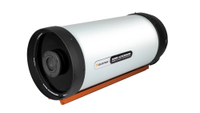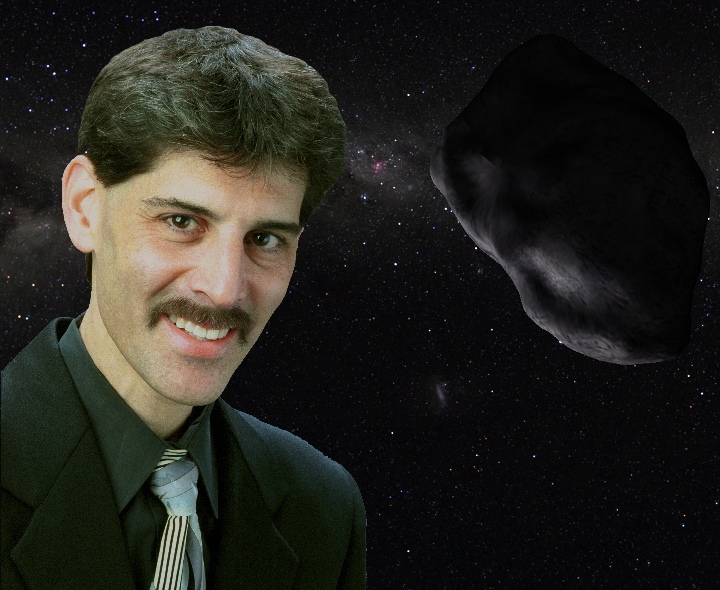Video astronomy: Bring the universe to your friends with Celestron's RASA 8 telescope
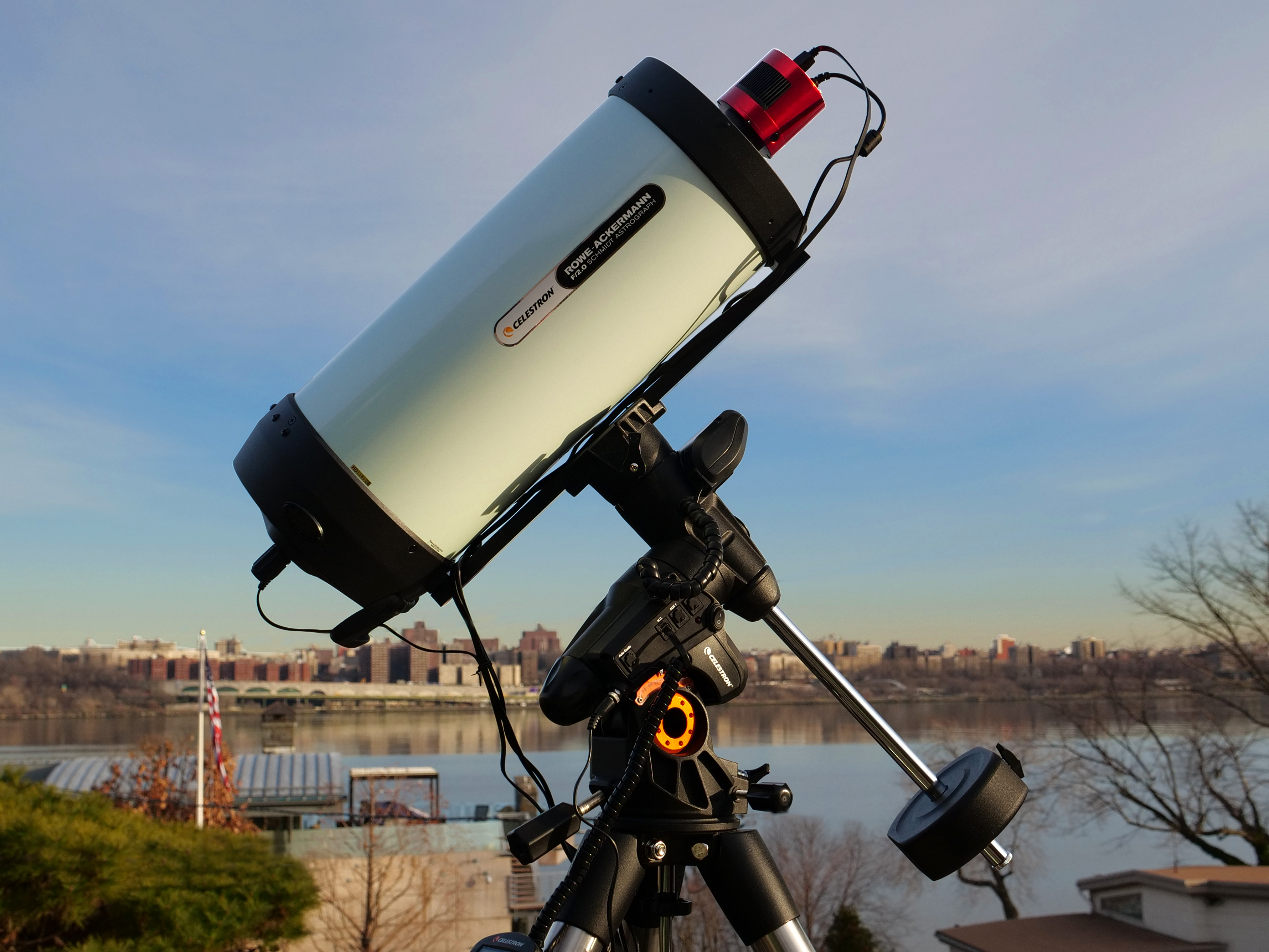
A new generation of optically "fast" telescopes, connected to compact high-resolution video cameras, is poised to disrupt amateur astronomy — in a good way.
Such "video astrographs" can transform our lonely pursuit into a much more social hobby. These new scopes can also bring magnificent, colorful, magazine-quality astrophotography within reach of modest budgets — even for those of us living near light-polluted cities.
Leading this new era of happy disruption: Celestron's Rowe-Ackermann Schmidt Astrograph (RASA, pronounced "RAHZ'suh"). The RASA is purpose-built to capture wide, flat fields of starlight without introducing false color and without smearing or stretching any individual star's appearance (the dreaded "coma" problem).
It's called an "astrograph" because it's designed solely for photography. Think of it as a giant camera lens. You cannot use it for visual astronomy; there's no hole in which to plop an eyepiece! RASAs come in three aperture sizes. We looked at the most affordable RASA 8-inch (20 centimeters).
Related: Best telescopes for the money — 2020 reviews and guide
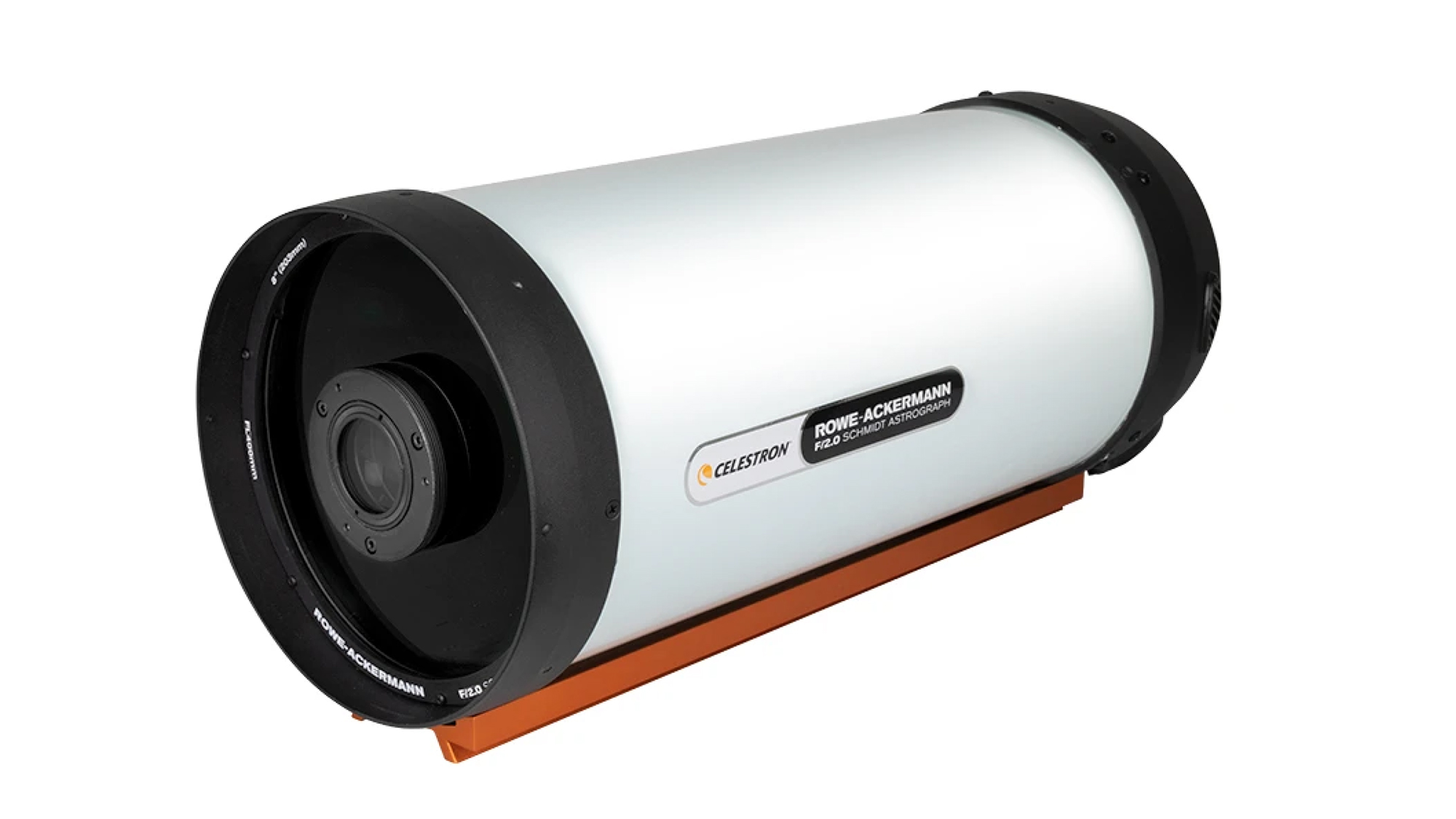
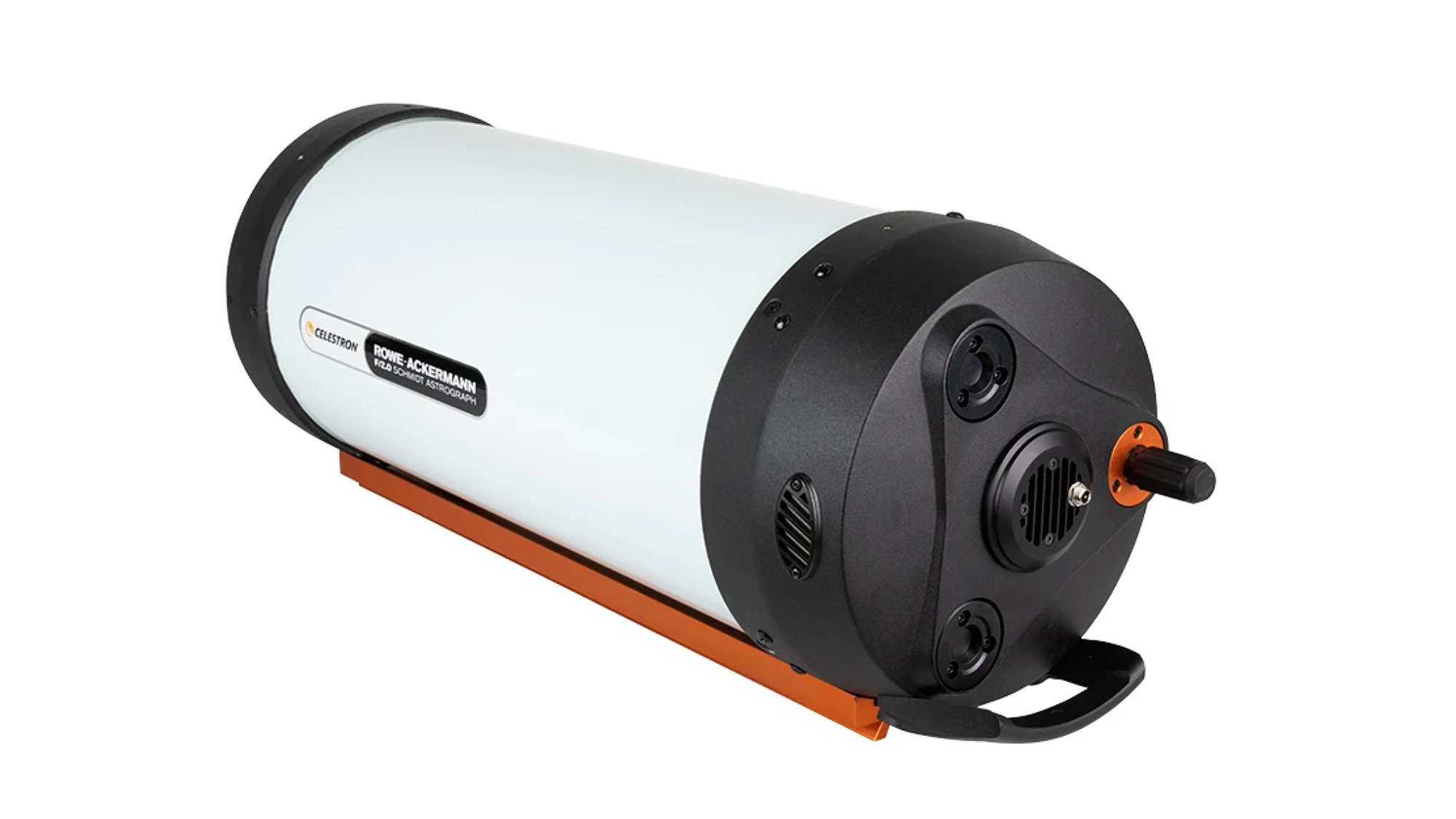
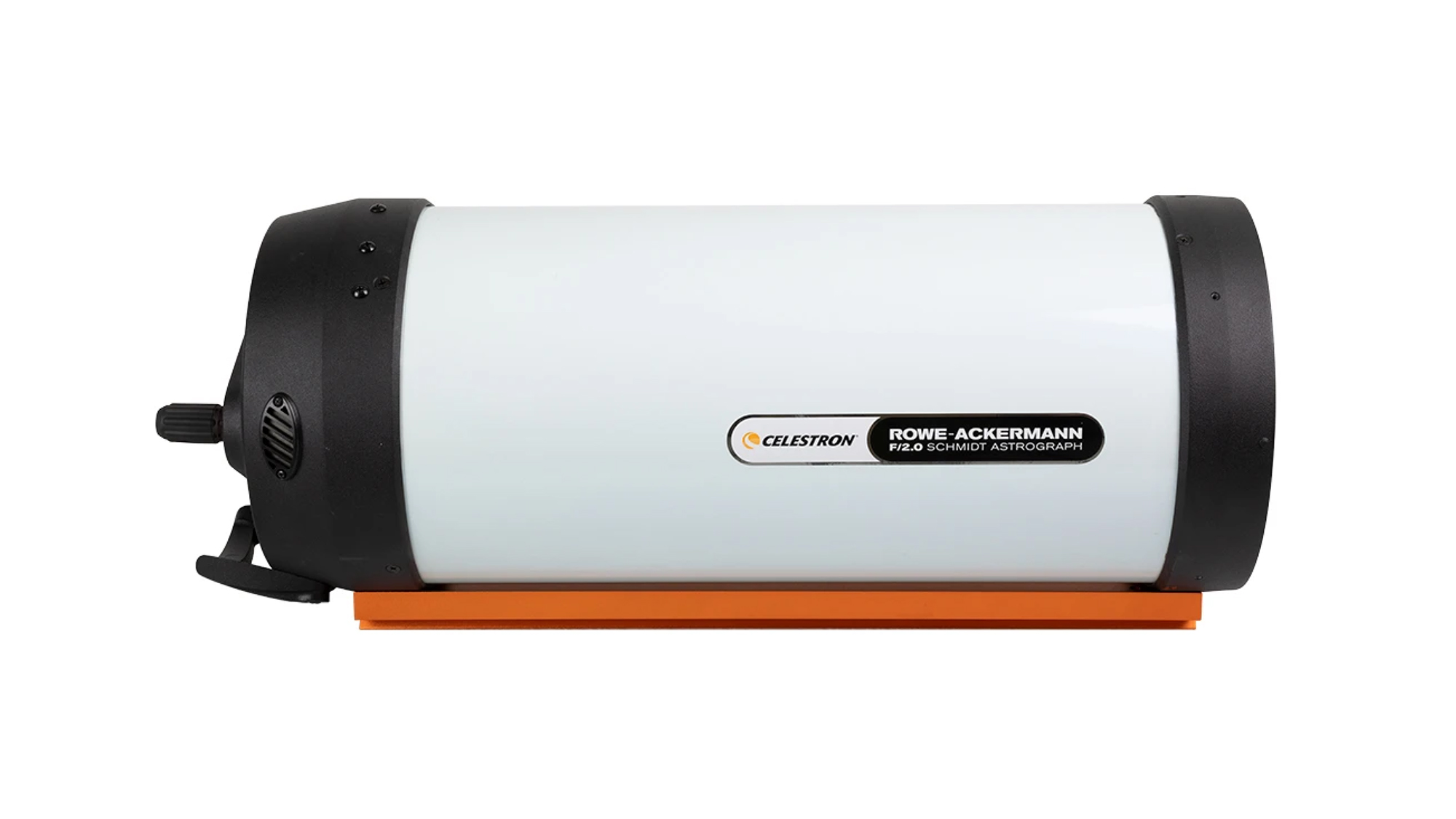
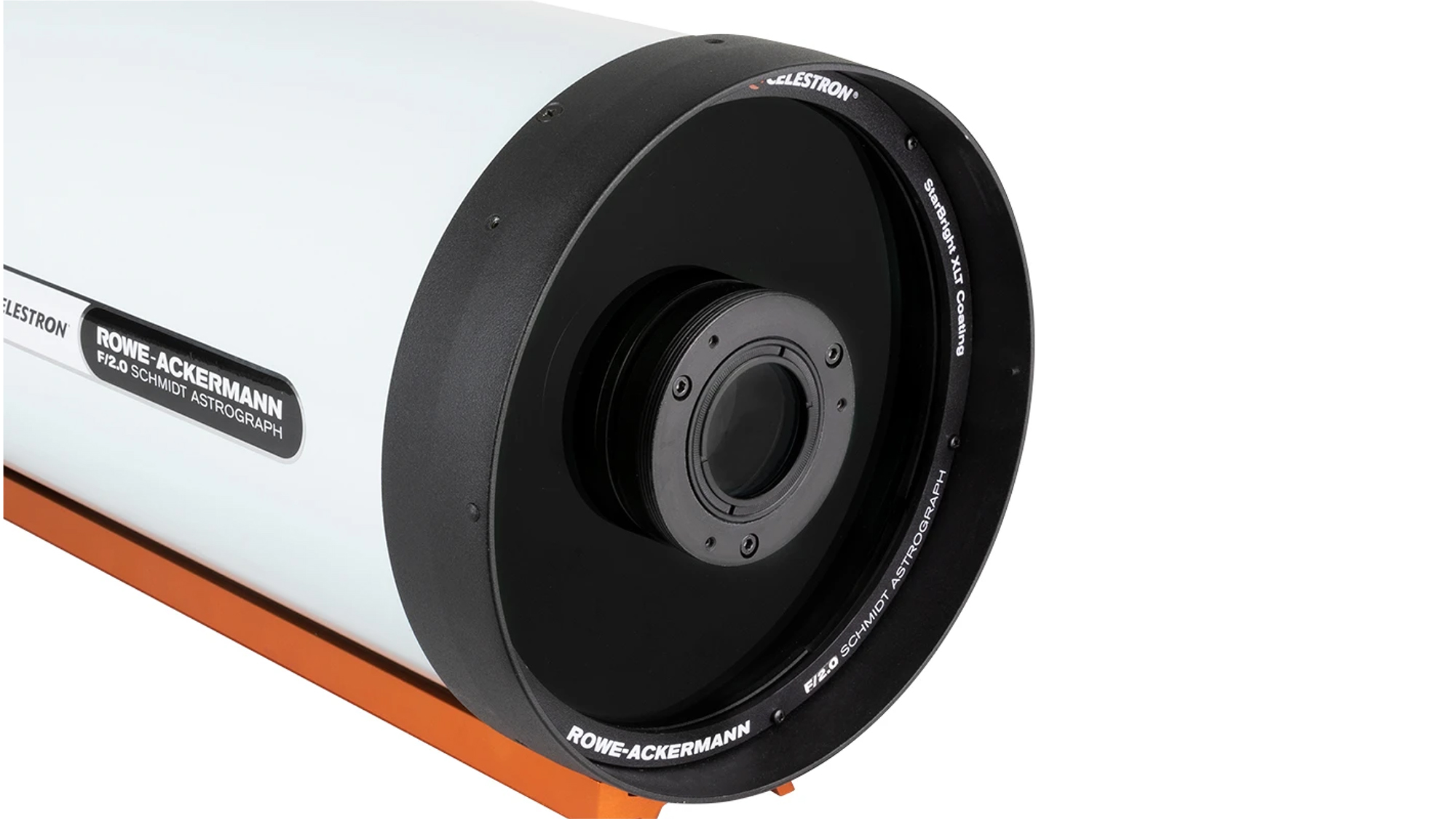
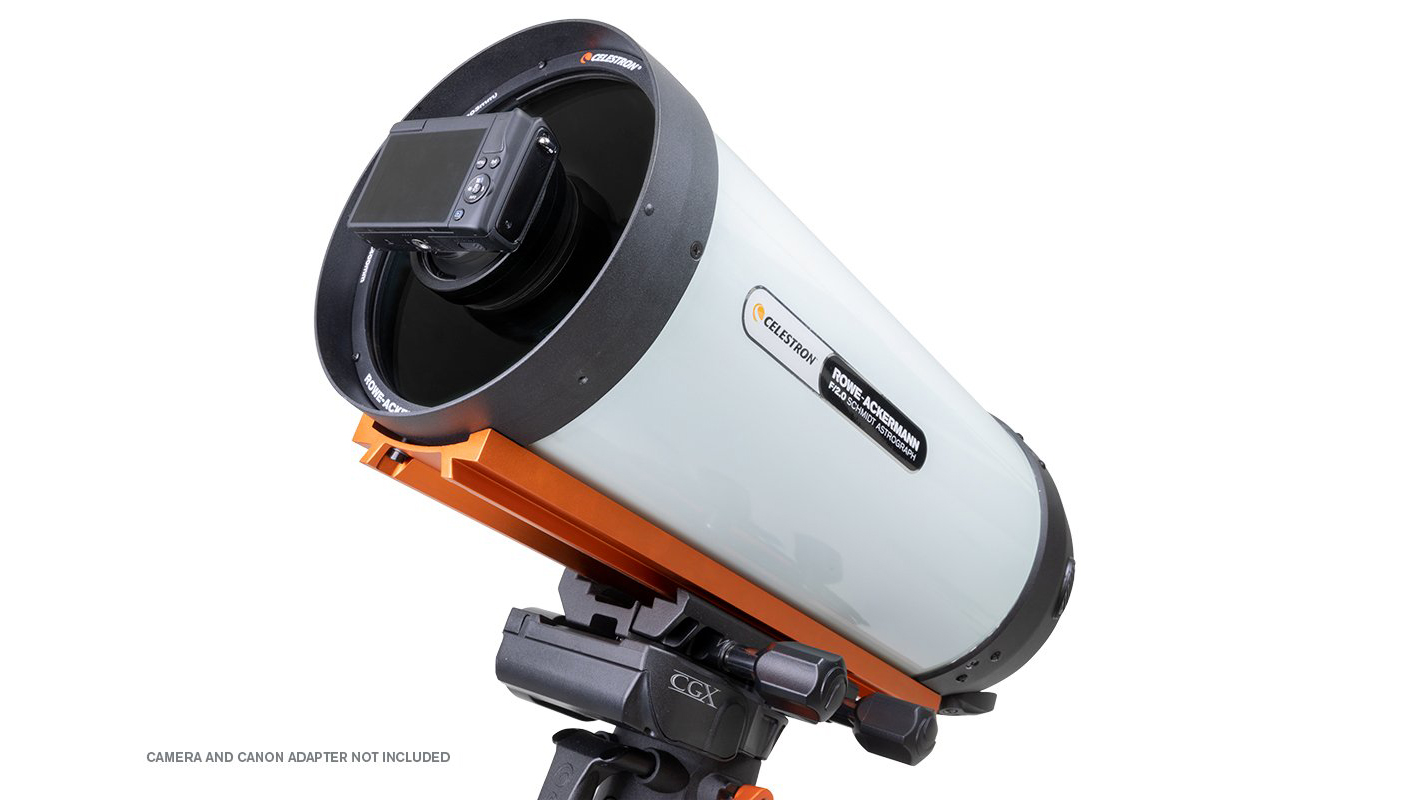
The other heroes of this joyful revolution are new video cameras made by ZWO, Atik, QHY, Meade, Orion, Altair, Celestron and others. These compact, high-resolution cams easily fit onto the RASA's front plate, just where the image comes together ("prime focus"). Their compact, generally cylindrical bodies block very little of the view.
The RASA gathers light so quickly, it takes only a few seconds for software to begin to build a stunning image on a live video monitor. And the view continues to improve as the data build. For live video astronomy, it's best to use a color camera.
Get the Space.com Newsletter
Breaking space news, the latest updates on rocket launches, skywatching events and more!
Buy Celestron RASA 8 on Amazon.com | $1,699.99
Capture wide-field, deep-sky images in seconds with Celestron's 8-inch Rowe-Ackermann Schmidt Astrograph. The telescope has incredibly fast optics and an ultra-stable imaging system. It does not include a tripod and mounting system.
Aperture: 203mm (8") | Focal Length: 400mm (15.74") | Focal Ratio: f/2.0 | Length: 628mm (24.7") | Weight: 17 lbs. (7.7 kg) | Spectral range: 390-800nm
Why video cameras?
Say the word "video" and most people think of something moving on a screen. But video astronomy is not about seeing motion in the sky. True, every star in the universe moves. Our own sun — along with planet Earth — is slashing through spacetime at about 220 kilometers per second, or 490,000 miles per hour. The fastest stars — those booted out by supernova blasts or slung around by supermassive black holes — rip along at more than 1,500 km/s. Our human eyesight evolved to catch motion: Threatening predators, enticing food, treacherous situations, sexy people. But most stars are so far from one another, they don't seem to move on time scales humans can easily notice. So why shoot starlight on video?
Video is a stream of still images. If you stack them up — rather than stringing them out — you can use software to build up the brightness, bring up the color, subtract out the self-noise of the camera. If the telescope is "fast," those images can quickly add up to a glorious ghost of stellar nebulosity, materializing on a monitor, right before your eyes: The births and deaths of stars revealed. Something deeply moving on a screen after all!
What's fast? Focal ratio explained
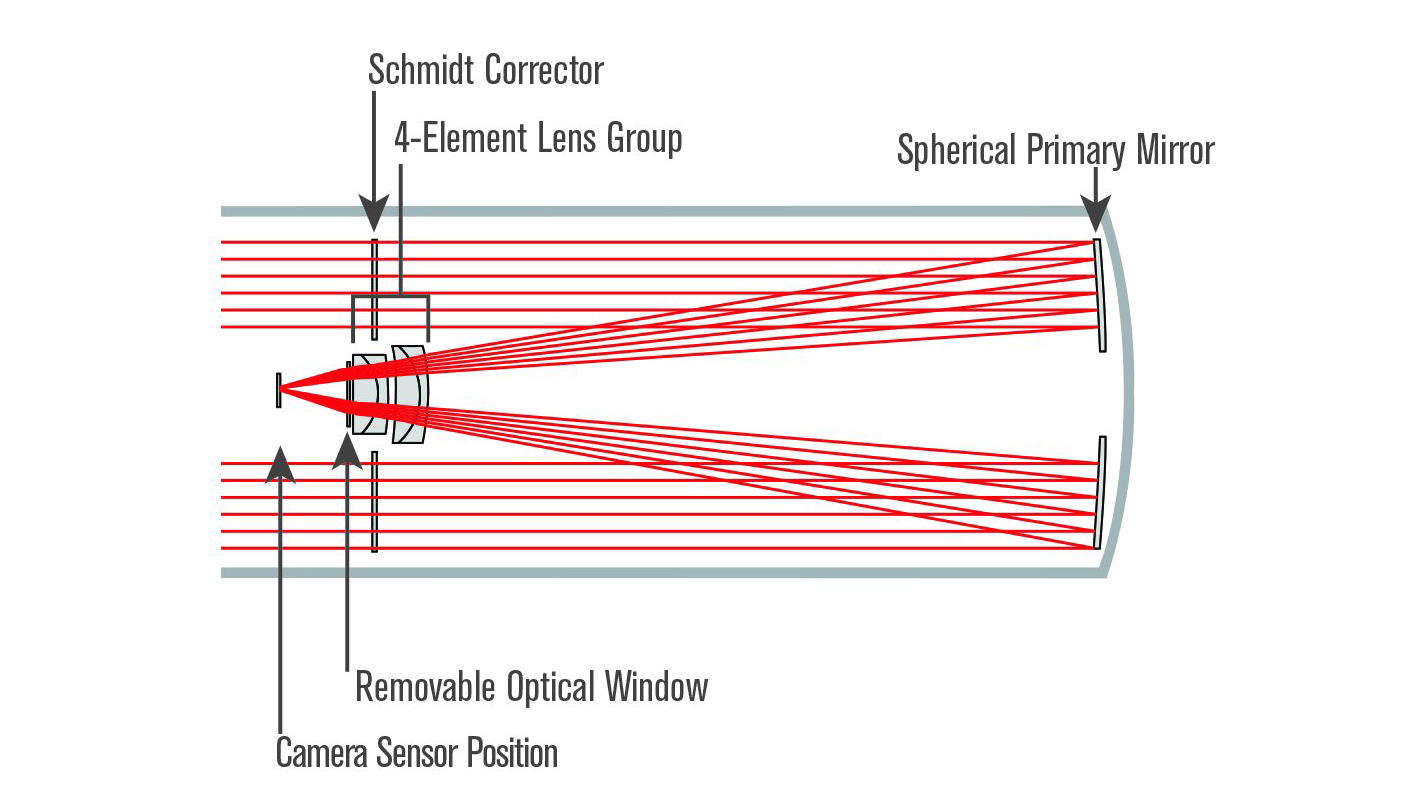
You'll frequently see a telescope described by its "f-number;" "f/11, f/6" and so forth. That's it's "focal ratio" — it's the number you get if you divide the focal length (distance from the main mirror or lens to the point where the image comes into focus) by the aperture (diameter of the main mirror or lens).
The lower the f-number, the "faster" the telescope will collect light, so the brighter the image will be. But it also means the field of view will be wider and the magnification lower. Faster instruments are thus better for photographing big dim targets, like galaxies and nebulas, which tend to be more diffuse. Slower optics are better for small bright targets like planets, lunar features and star groups. The RASA, at f/2.2, is a speed demon, fuzzy object grabbing machine!
The social scope
Long before the novel coronavirus washed across our planet, we amateur astronomers were experienced practitioners of social distancing, though not by choice or necessity. Astronomy has not exactly been the most communal of activities. One spends a long while setting up, plugging-in, aligning, calibrating, star-finding, pointing, focusing and fiddling. These require concentration, which means not interacting with people very much.
Even before we needed to keep 6 feet (2 meters) of distance from one another, it wasn't that easy to coax friends or family members out into the cold to wait their turn at the eyepiece. They were inclined to be nervous about damaging your expensive 'scope; self-conscious about the folks waiting behind them. They were often bent over and uncomfortable adapting their bodies to our oddly angled rigs. So, they usually took much less of a good long look than they really wanted. This was hardly conducive to collective enjoyment. What should have elicited a "WOW!" too often turned into a "meh."
Video astronomy — also called "electronic-assisted astronomy" — changes all that. A live monitor connected to the telescope, or a live feed to the Web, instantly brings back the fun. With the RASA, "a laptop, and a camera is all you need," Dylan O'Donnell told Space.com from his Byron Bay Observatory in eastern Australia. An internet marketer by day, and a topnotch astrophotographer by night, O'Donnell publishes the extremely helpful STAR STUFF YouTube channel.
"If you wish to use a portable device, like a phone or a tablet," he said, "the ZWO ASI Air (Wi-Fi camera controller), or an equivalent, can make portable astronomy a little bit easier than lugging around a computer." With such a rig and good internet connectivity, you can live-stream the wonder of the universe to many people isolated behind closed doors.
Even before we needed to keep 6 feet (2 meters) of distance from one another, it wasn't that easy to coax friends or family members out into the cold to wait their turn at the eyepiece. They were inclined to be nervous about damaging your expensive 'scope; self-conscious about the folks waiting behind them. They were often bent over and uncomfortable adapting their bodies to our oddly angled rigs. So, they usually took much less of a good long look than they really wanted. This was hardly conducive to collective enjoyment. What should have elicited a "WOW!" too often turned into a "meh."
Video astronomy — also called "electronic-assisted astronomy" — changes all that. A live monitor connected to the telescope, or a live feed to the Web, instantly brings back the fun. With the RASA, "a laptop, and a camera is all you need," Dylan O'Donnell told Space.com from his Byron Bay Observatory in eastern Australia. An internet marketer by day, and a topnotch astrophotographer by night, O'Donnell publishes the extremely helpful STAR STUFF YouTube channel.
"If you wish to use a portable device, like a phone or a tablet," he said, "the ZWO ASI Air (Wi-Fi camera controller), or an equivalent, can make portable astronomy a little bit easier than lugging around a computer." With such a rig and good internet connectivity, you can live-stream the wonder of the universe to many people isolated behind closed doors.
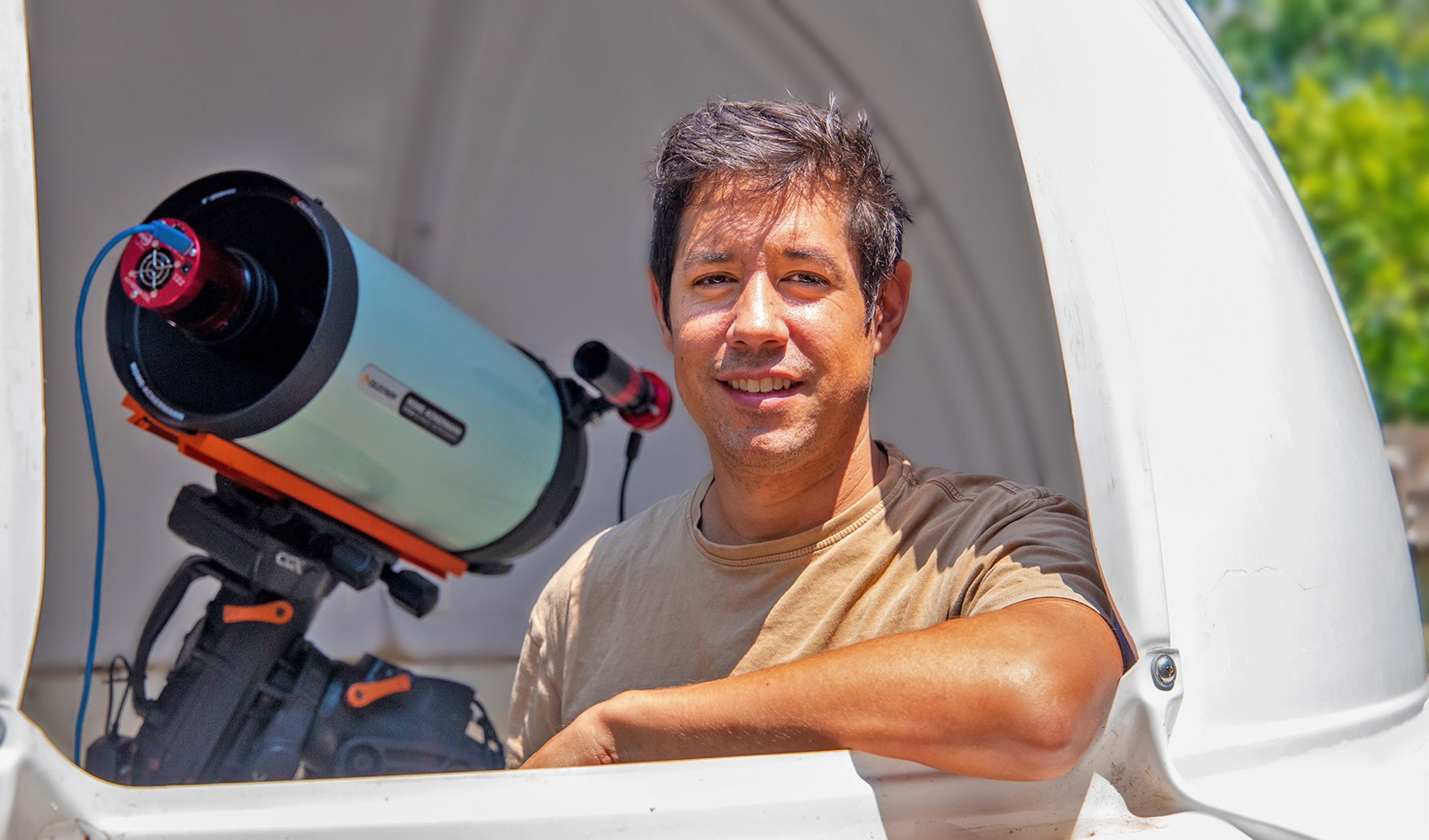
As a member of Team Celestron, O'Donnell was one of the first to put the RASA through real-world, gotta-get-the-shot demanding paces. "I have used the RASA for live video style astronomy and these f/2 scopes are perfect," he said. "Some software — like SharpCap and [Howie Levine's] Astro Toaster — can provide live stacking features, which will build up an image from short exposures fairly quickly on-screen, while removing the noise and making astronomy a much quicker, more visceral experience. At outreach events this technique can be very impressive with a projector!"
Watch Dylan O'Donnell mount a camera on the RASA 8.
When we are able to congregate again, this formerly lonely, arcane hobby can quickly become an enjoyable shared experience — like a cool concert or the big game — on a wide screen. Just please check, if you're planning on doing this at a classic star party, that your bright monitor will be allowed. Don't you dare despoil the dark for visual observers!
Astronomical get-togethers don't have to exist only in real time and real space. Social media shifts the star party through the fourth dimension: Posting the proud astrophoto you just made by stacking and tweaking last night's imaging run is a wonderful conversation starter.
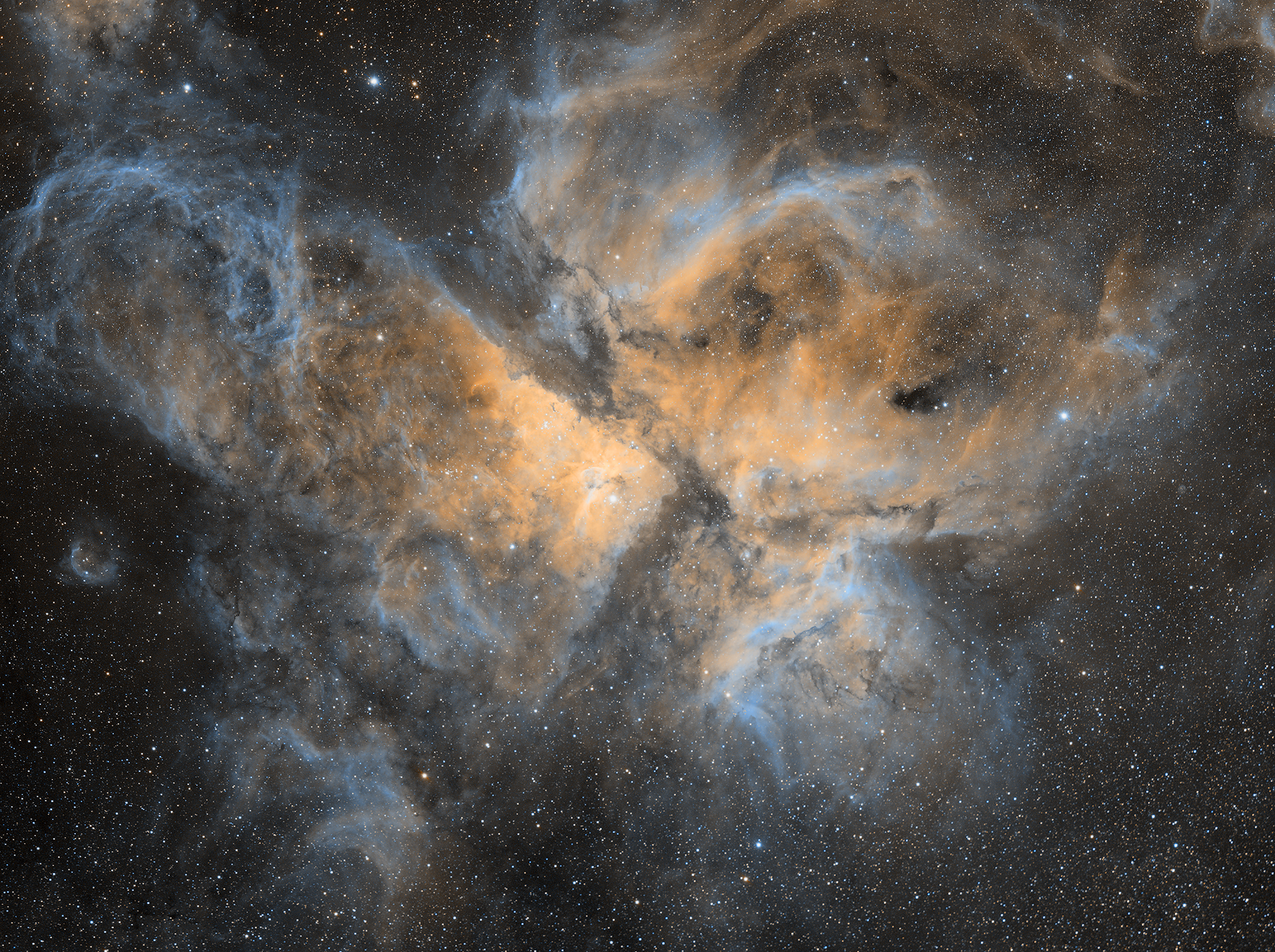
Going deep
Beyond grabbing live images for a display, video astronomy on the RASA can also dredge ancient light waves from the abyss much faster than nearly every other telescope. To get the sharpest images of the deep sky, it's best to switch to a monochrome camera and capture one portion of the spectrum at a time ("narrowband imaging").
The RASA 8's relatively small aperture means you can't use big motorized filter wheels; you have to manually insert single filters along the optical path to your camera. But this can be very worthwhile if you live under light pollution; so-called notch filters and sky filters can subtract artificial light from your images of the sky.
If you grab a number of exposures in sets, each optimized for recording key wavelengths, your final stacked astrophoto can reveal structure in the universe that was invisible to the largest observatories on Earth 40 years ago.
Thanks to the RASA's optical speed, you can do in 2 hours what other instruments can barely manage over two nights. And such a system can get good images under surprisingly light-polluted locations near cities. O'Donnell's "RASA 8 First Light Review" video will show you just what's possible.
Even though the RASA is fast, you still need it to accurately track a point on the sky. That demands a motorized mount under computer control.
Start by performing the best polar alignment you can. Then, "you really want to be guiding and dithering if possible," O'Donnell said, "so you'll need a guide-scope and camera connected to your imaging computer."
To "dither" means to slightly nudge the telescope in a different random direction each time you start a new exposure. This makes it easy to find and kill bad pixels (from the camera's sensor), satellite streaks (there are soon to be many more of these!), or any other consistent artifacts when you stack the shots to make your final composite.
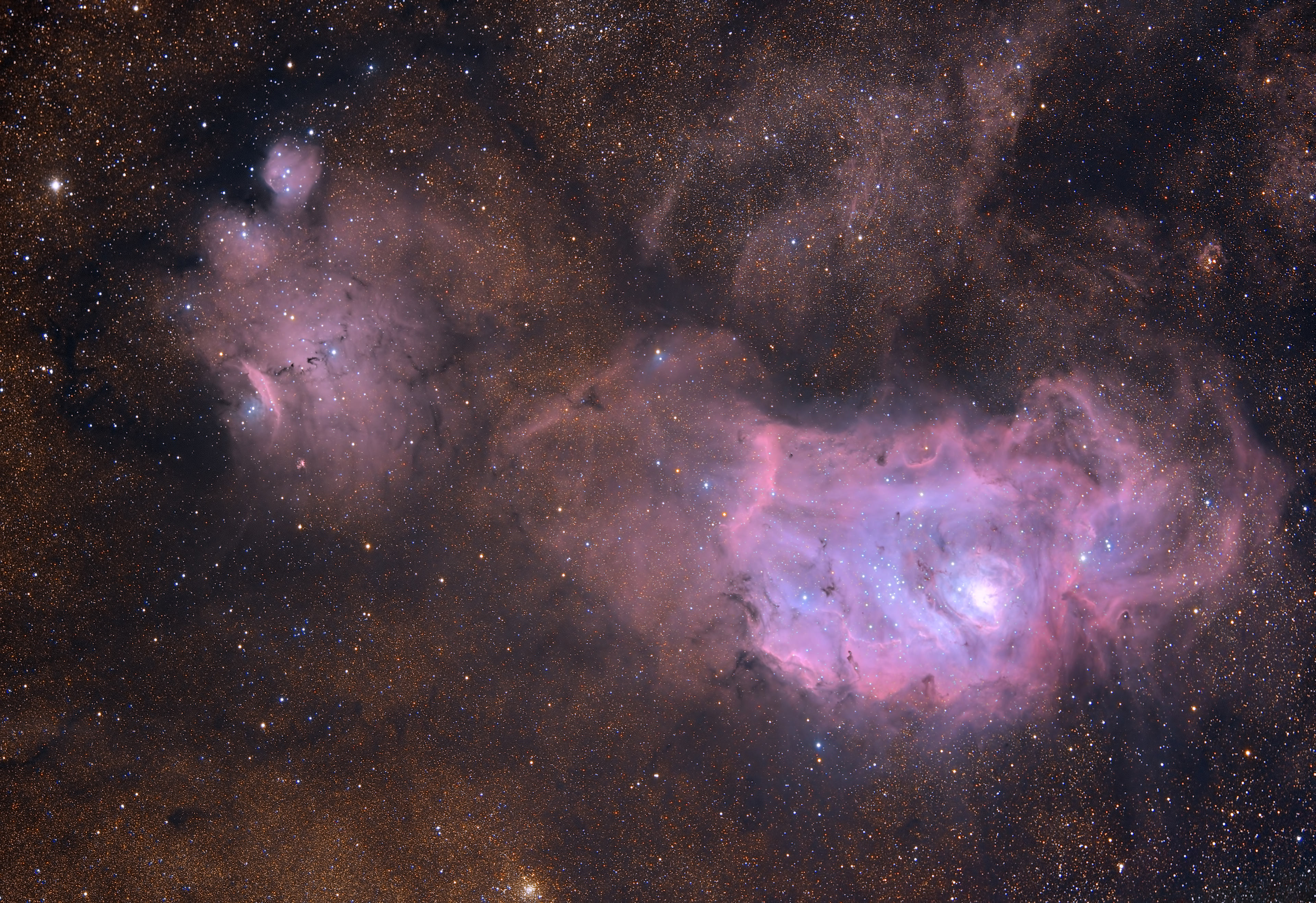
Beyond dither, there's drizzle. A technique originally developed to perfect the historic Hubble Deep Field images is now available to you, the amateur astrophotographer. Drizzling — technically known as "variable pixel linear reconstruction" — can be invoked at the image-processing stage to restore information lost to under-sampling (one can only expose for so long). Drizzling on your image data can correct small geometric distortions caused by variability in the optics; the astrograph and the camera are excellent, but not perfect:
"One of the reasons the RASA 8 works so well is because the sampling is so good for popular cameras," O'Donnell said. "However, as the field is so wide, stars appear quite small and may feel blocky." But dither (as you're shooting) and drizzle (as you're stacking) can repair the downside damage done by wide-field image capture. Watch O'Donnell break down the whole workflow into simple, easy steps in his video, "Taking Photos of Space."
The RASA range
RASA Optical Tube Assemblies (OTAs) — just the telescope itself, no mount, no tripod — of three different dimensions are currently available: The RASA 8-inch (20 cm) can be found for about $1,700. Stepping up to the RASA 11-inch (28 cm) will cost around $3,500. You can watch O'Donnell's RASA 11 review video here.
At the high end, Celestron has also developed the research-grade 36 cm (14-inch) aperture RASA targeted to institutions, companies and agencies involved in space surveillance. Many of these big RASAs work to monitor space junk that can damage communications data satellites. Others stalk comets and near-Earth asteroids. A few are at work examining galaxies and galactic clusters.
Buy Celestron RASA 8 on Amazon.com | $1,699.99
Capture wide-field, deep-sky images in seconds with Celestron's 8-inch Rowe-Ackermann Schmidt Astrograph. The telescope has incredibly fast optics and an ultra-stable imaging system. It does not include a tripod and mounting system.
Aperture: 203mm (8") | Focal Length: 400mm (15.74") | Focal Ratio: f/2.0 | Length: 628mm (24.7") | Weight: 17 lbs. (7.7 kg) | Spectral range: 390-800nm
Beyond price, the RASA 8 can claim two more advantages: It has a wider field of view than its siblings, letting you seize big celestial vistas, like the Orion Nebula, in a single frame. "That 400-millimeter focal length results in quite a wide field of view," O'Donnell told Space.com, "so unless you're looking at Andromeda, this telescope is less of a galaxy hunter and more of a big nebula monster!"
And the RASA 8 is also eminently transportable. The smaller 8-inch OTA can be used on a less expensive smaller mount, atop a more compact tripod; making it easier to get your rig out to dark-sky sites for better images — or to travel your sky-sharing machine at star party locations.
The RASA 8's smaller size, though, limits the size of the camera you can fit to it. Your old DSLR is too big. So, probably, is a full-frame video sensor. In fact, the RASA 8 is pretty much limited to APS-C (Advanced Photo System type-C) cameras of the popular Micro Four Thirds format. But there are a lot of them to choose from
To pick the right camera for your needs, it's best to work with a qualified astronomy store. The area at which the RASA 8 can focus is quite tightly bound; your camera's sensor must be in that zone and only certain cameras will succeed. We worked with expert reseller David Barrett at High Point Scientific to configure our rig.
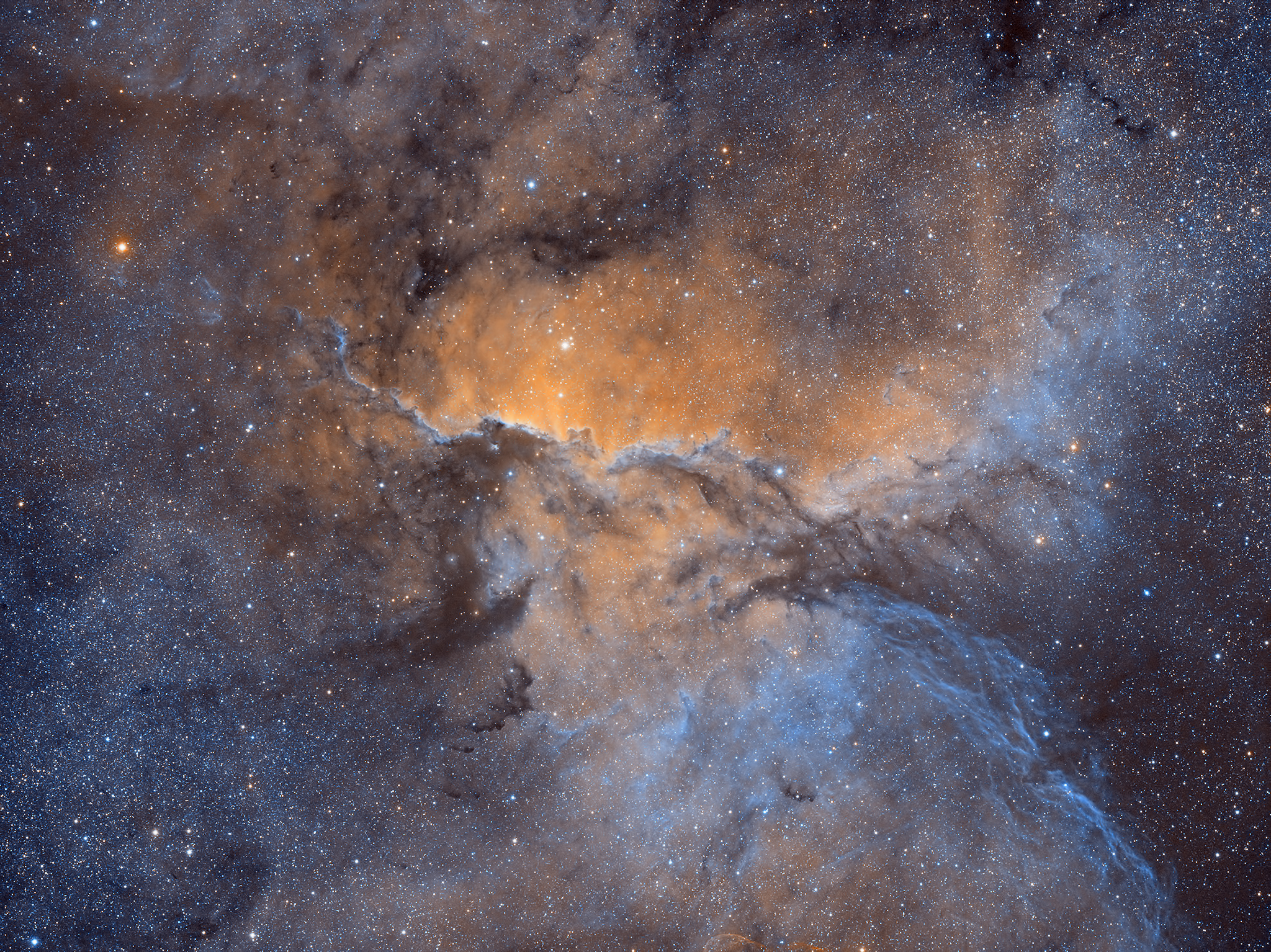
The need for speed
The vast majority of stars — even most of those in our own galaxy — can't be seen without a telescope collecting their light and a camera storing that light. Stare as you might into the night, you won't see what a "time exposure" can record. To see color and find structure in the cosmos, you must collect that light over time, storing it as a long-exposed image and, perhaps, stacking many such images. With a typical "optically slow" telescope, this can take many hours outside — often over several nights — and more inside, processing and tweaking at the computer. Astrophotography has, up until now, taken great patience and almost monastic meditation — characteristics with which few of us are abundantly blessed.
Telescope optical designs each have differing capacities to gather photons (or particles of light) from far away. The faster a scope can grab them, the less Earth has time to rotate. The RASA can grab a basic monochrome ("black and white") image of any of the better known "fuzzies" (such as the Andromeda Galaxy or the Orion Nebula) in about a minute, with no need to guide the scope. A typical Schmidt-Cassegrain telescope (SCT) of the same aperture will need at least 13 minutes to get a similar image. And the SCT will need to be precisely polar-aligned and actively tracking the whole time, as Earth noticeably rotates.
In camera terms, the RASA is like a lens rated at f/2.2. That's very "fast." Only the highest quality prime lenses used by cinematographers typically deliver that performance. By comparison, the average SCT or Richey-Chretien ("R-C" like the Hubble Space Telescope) works no faster than f/10. Telescope designers use a more precise T-number, which takes into account light stolen by internal structures. The RASA is a T/2.5 system; a typical SCT does no better than about T/11.
Magnification is not the RASA's strong suit. Each of the three RASAs is a wide-field light bucket, best for bagging large, dim objects like nebulas and large (nearby) galaxies, but also for discovering asteroids, comets and locating human-made space junk. It's not for planets. If you're interested in investigating for yourself if Jupiter's Great Red Spot is really shrinking, get hold of a good apochromatic refractor.
Related: Best telescopes for beginners — 2020 guide
A unicorn telescope?
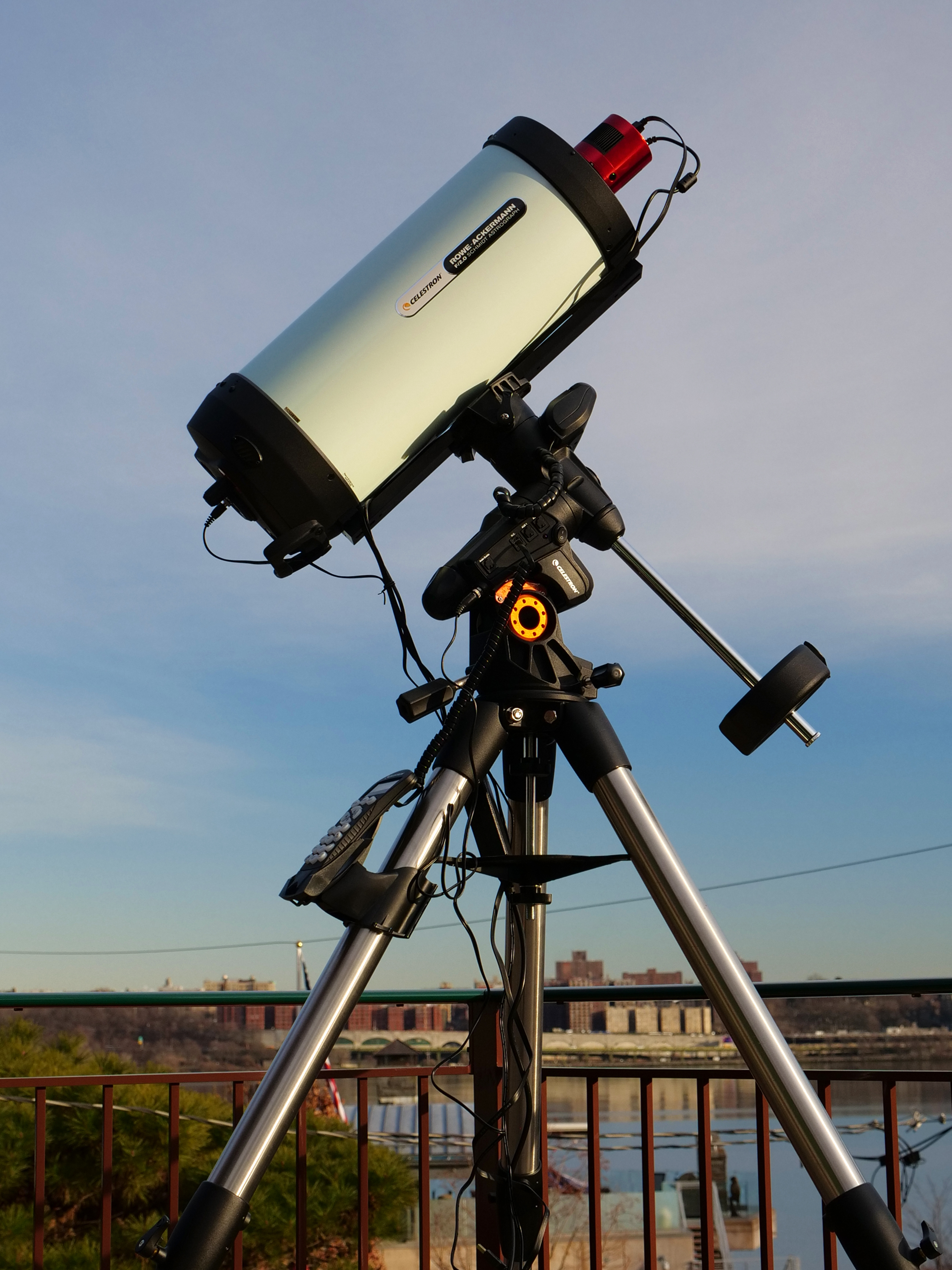
At first, the idea seems kludgy: You plop a blob of video camera in the middle of the front end of an expensive telescope, so it sticks out into the night like a narwhal's tusk. Add to that the insult of a couple of draped cables: data (video) and power. Aren't you obstructing the most vital part of the light-collector? Well, no, you're not. A hybrid "catadioptric" telescope takes light in around the ring of its big "corrector plate" at the front, then bounces it off a large mirror at the back. In the more familiar Schmidt Cassegrain (SCT) or Maksutov Cassegrain (Mak-Cas) telescopes, that light is bounced one more time, off a small secondary mirror, and exits through a hole in the primary mirror where your eyepiece lies waiting.
With no eyepiece, RASA has no need for such a hole. Part of the genius of the Rowe-Ackermann Schmidt Astrograph (and its ancestors, the Fastar and HyperStar camera retrofits) is to bring the image to prime focus after just one bounce. So that's where you put your camera. You can't put an eyepiece there; your head would block most of the aperture.
The back-shell of the RASA contains an electric fan — and a separate flow-through vent-port — to help bring the optics into thermal equilibrium with the world around them. Differences in temperature across the glass surfaces can play hob with your focus, making your star field look like it's printed on Silly Putty. The RASA's fan gets 12-volt power from a battery pack or your power tank; that's one of several cables you'll need to run.
You'll also need to cable the camera. Outside of smartphones, there aren't yet many small, wireless high-quality video cameras. Perhaps with 5G network sprouting up everywhere (soon!), demand for such a "little beastie" will develop. Until then, we'll have cables in our fields of view. Those wires will introduce diffraction spikes into your images. But if you dress your cables out at 90 degrees, you'll get that classic four-pointed spiky star effect, which a lot of viewers find pleasing.
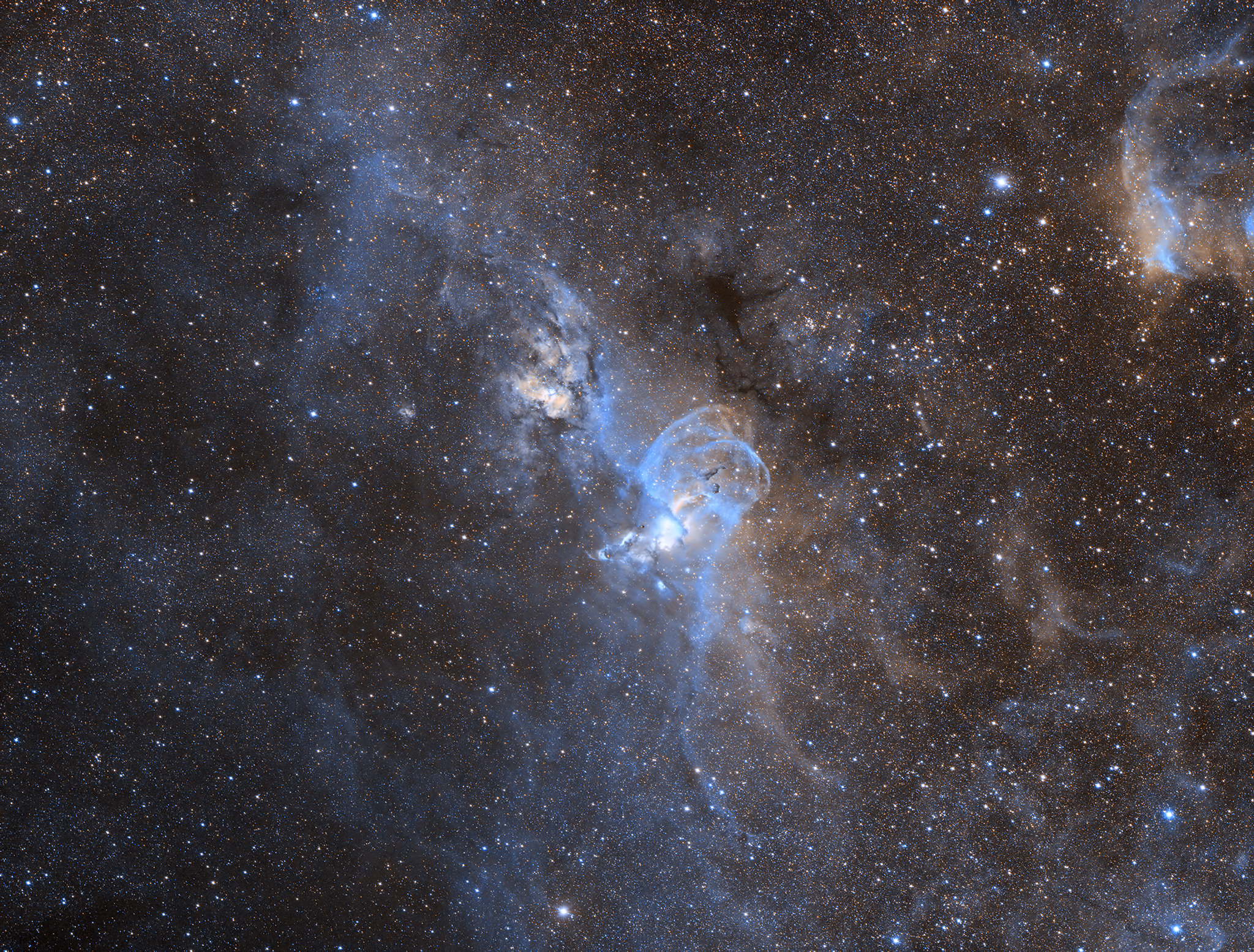
CMOS vs. CCD
As the Apollo 11 crew was headed for the moon, the first charge-coupled device (CCD) image chip was being developed at Bell Labs in New Jersey. CCDs soon replaced the fragile and finicky tubes in video cameras. I first saw one applied to a telescope in 1985, at the observatory complex on Mauna Kea in Hawaii.
Modern barrel CCD astrophotography cameras are spectacularly "quiet" (low visual noise), especially when actively cooled. But they suffer from occasional "hot" pixels (individual full-white errors of quantum accumulation). And they will sometimes "bloom" (introduce a shaped glow) across the frame. CCDs take wonderfully detailed images, but they take a while to do so.
Gaining on CCDs in quality — and available at lower cost — are CMOS (Complementary Metal Oxide Semiconductor) sensors. They tend to be noisier than CCDs. But that noise is of a different, more subtle character. And CMOS sensors can be made smaller than CCDs, with much higher pixel densities. The cameras in your phone are CMOS. CMOS logic is fast; a quicker exposure through a telescope means a lower chance that motion-tracking errors will build up to distort your celestial portraits.
If your main focus (a poor pun) is on planets, Earth's moon or the sun, you'd be well advised to look to a CMOS solution first. Just please note that wide-field OTAs like the RASA are not good at small targets. If you crave distant galaxies — and have, perhaps, a bit more disposable income for your astrophotography hobby — look into one of the higher end scientific CCD cameras, which operate at 16 bit-depth.
Whether CCD or CMOS, shooting stars with dedicated video cameras gives you the advantage of active cooling, which reduces electronic noise. Your old DSLR doesn't have a fan (and it's too big to use on the RASA 8 anyway.)
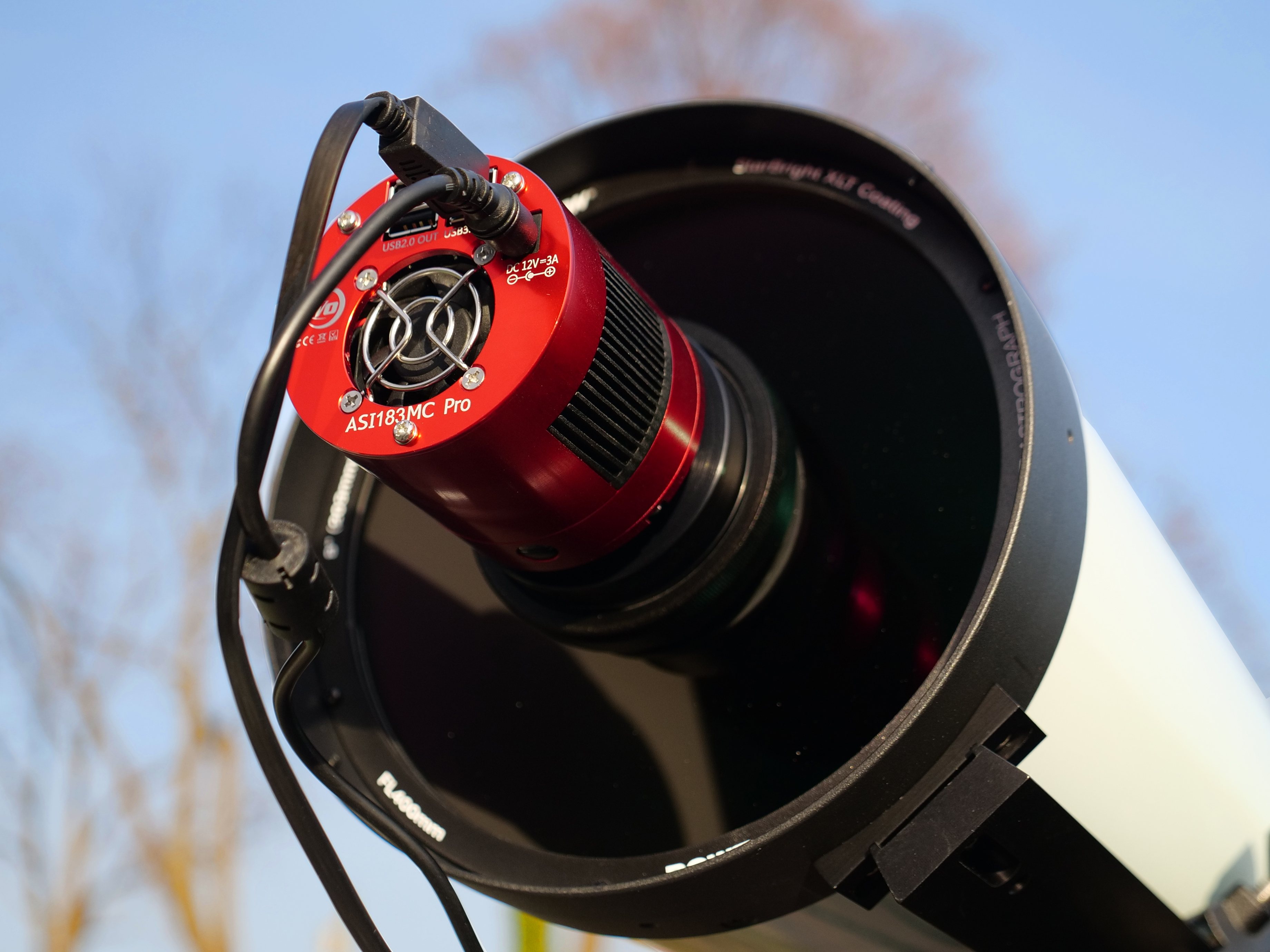
On the shoulders of giants
Starting in the 1930s, a few professional observatories built large telescopes with cameras inside them. Designed by the Estonian optician Bernhard Schmidt, these instruments boasted fast focal ratios and very wide-field views. But changing the film was cumbersome. And servicing the camera meant taking most of the telescope apart.
The ability of these "Schmidt cameras" to seize broad swaths of sky quickly enabled many asteroid discoveries, supernova surveys and captured the earliest clues to the existence of the attractive force of dark matter and repulsive force of dark energy.
Starting in the 1970s, many of these grand old instruments were upgraded with some of the first CCD detectors in place of the film cameras. At first, CCDs were very expensive; in many cases, custom made. (One of the largest Schmidt cameras, the 48-inch (1.2 m) Samuel Oschin Telescope at the Palomar Observatory in California, has been upgraded with five successive CCD generations.)
In the late 1970s, telescope manufacturers serving the amateur market began to offer Schmidt optical tubes with 35-mm film holders inside, advancing amateur astrophotography beyond the self-made, bespoke rig level.
As the new century approached, and CCDs further displaced film, Celestron introduced its Fastar camera, designed to retrofit stock Schmidt-Cassegrain telescopes (SCTs). Owners would amputate the telescope's small secondary mirror, replacing it with the Fastar. This meant they could no longer observe by eye, but could concentrate starlight on the Fastar's 320-by-240-pixel CCD; quite primitive by today's 3,840-by-2,160-pixel ("4K") standards, but amazing for the time.
In the early 2000s, the owners of Starizona, an astronomy enthusiasts' store in Tucson, Arizona, propelled the hobby of astrophotography forward with the innovative HyperStar retrofit kits. Owners could now attach their new DSLR (Digital Single-lens Reflex camera), or small CCD video camera, to their SCT. Wide-field electronic images, garnered by fast telescopes with short focal lengths, were now possible. But only certain telescopes could be converted. Smaller apertures would be useless with big DSLR cameras hanging on the front, blocking light. And it wouldn't have made good business sense for Starizona to create a kit for every existing type and size SCT in service.
Around 2013, the Celestron Co. came to an internal consensus that a dedicated fast, wide, astrograph — a telescope tube built specifically as a camera "lens" — could open astrophotography to many more amateur observers. Pioneering designs by David Rowe, and innovative improvements from Mark Ackermann, challenged Celestron's engineers to bring an affordable mass-produced astrograph to market. Rowe and Ackermann were honored as the "R" and "A" in RASA. And the RASA 11 was born.
Driven by consumer demand for better digital cameras and imaging smartphones, video sensors continued shrinking even as they grew in pixels. This spawned the clutch of less-massive, purpose-built astrophotography cameras available today. With smaller bodies — generally cylindrical in shape — such cameras obscure less of the telescope's working area, making it possible for Celestron to offer the RASA design concept in a more affordable 8-inch aperture footprint.
Observing the future
Remember those grand old Schmidt tubes with the film cameras inside? Now, as video cameras contract, it's possible the next generation of consumer telescopes, beyond RASA, might put the camera back inside the tube, more or less permanently mounted. Ubiquitous 5G network connectivity could make the camera, the astrograph OTA and the computer-driven tracking mount all completely wireless.
Time will tell. In the meantime, fast (f/2) wide field telescopes like RASA, and compact, 4K video cameras are here now, producing wonderful images that are easy to post and distribute. Every one of us is a stakeholder in the universe. Help your friends to claim their share.
Our rig config
This article was prepared using the following equipment:
- Celestron RASA 8
- Celestron Advanced VX mount
- ADM Dual-AVX saddle retrofit
- ZWO ASI 183MC Pro USB3.0 color cooled astronomy camera
- Starizona Complete RASA 8" Filter Slider System (STZ-SFS-ZWO)
- Orion DC Power Cord 07331
- ZWO AC to DC Adapter (American) ACD-US
- Buying your first telescope? What you need to know
- The best deals on Celestron telescopes & binoculars
- Best binoculars 2020: All-around picks for astronomy, nature, sports and travel
Follow the author @DavidSkyBrody. Follow us on Twitter @Spacedotcom and on Facebook.
Join our Space Forums to keep talking space on the latest missions, night sky and more! And if you have a news tip, correction or comment, let us know at: community@space.com.
Dave Brody has been a writer and Executive Producer at SPACE.com since January 2000. He created and hosted space science video for Starry Night astronomy software, Orion Telescopes and SPACE.com TV. A career space documentarian and journalist, Brody was the Supervising Producer of the long running Inside Space news magazine television program on SYFY. Follow Dave on Twitter @DavidSkyBrody.
